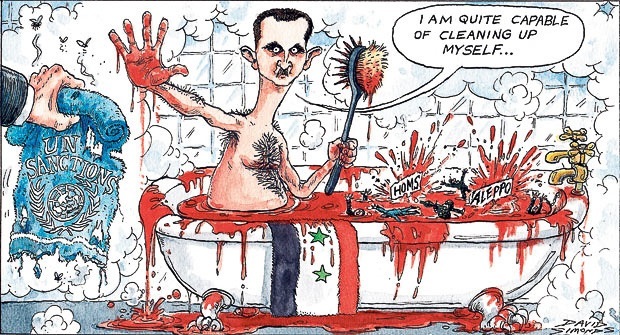
Depictions of Syria’s Assad the Butcher’s Repression Brought to Light in Cartoon Form
Democracy, elections, and voting at Democracy Chronicles
The number of artists and thinkers who are free enough to speak truth to power is growing even today. The internet is always the best example of this. Thanks to Flickr, a website where you can find images to post commercially, Democracy Chronicles is able to give you some of the best examples of anti-dictatorship propaganda ever produced. Also take a look at the Democracy Chronicles Political Art section.
Assad the Butcher, also known as Dictator of Syria, is shown as he truly is: bloodthirsty and violent. The dictatorships of Russia and China are also given their fair share of attacks for their continued support for Syria’s dictatorship. At least the democratic people of the world are united with the people of Syria on some common conceptions of the Syrian dictatorship. See if you can spot a pattern…
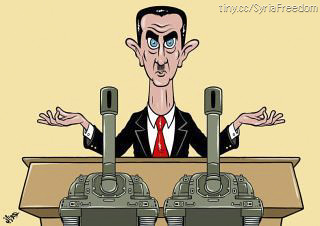


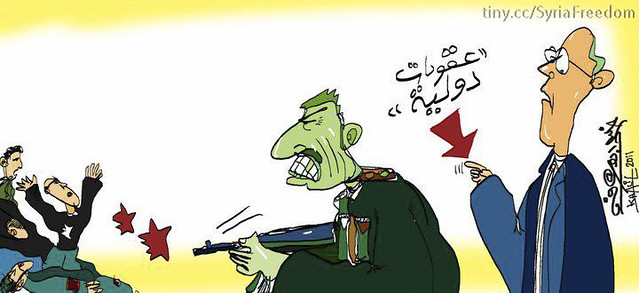
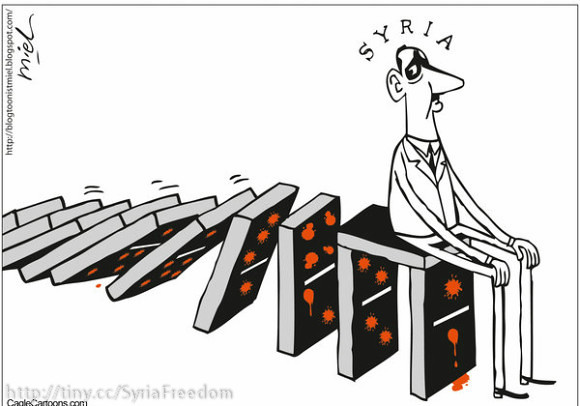
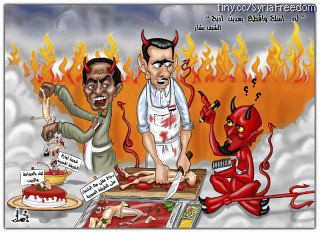

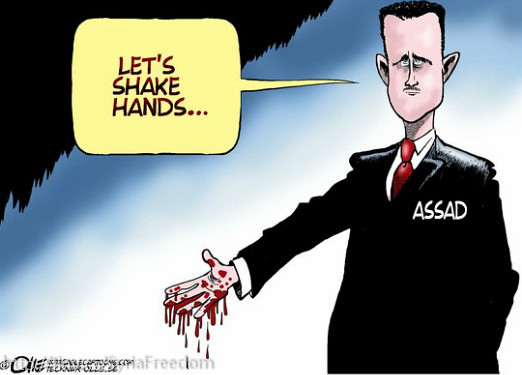
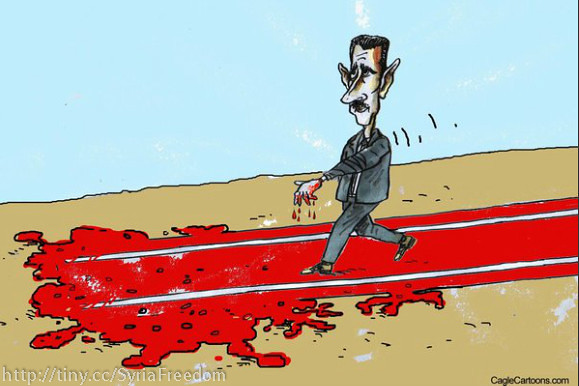
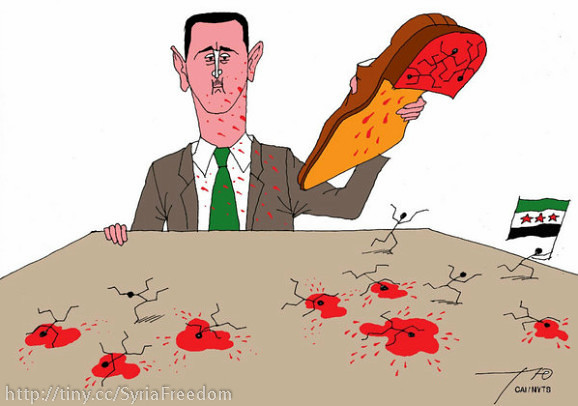
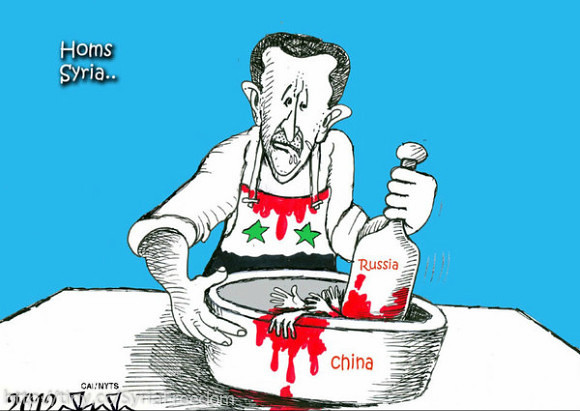
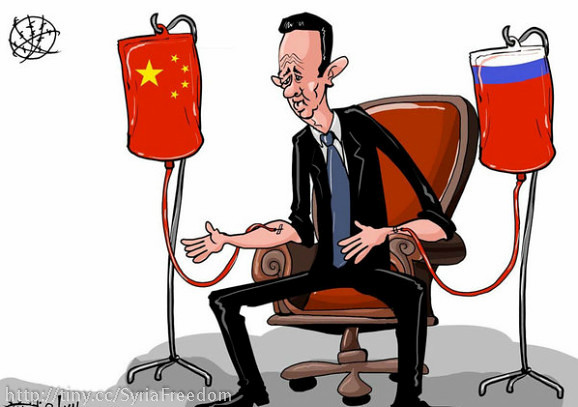

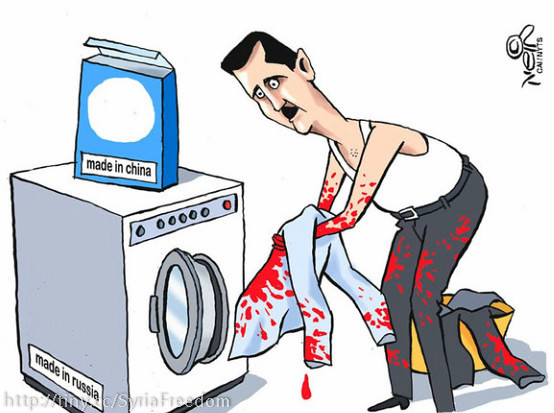
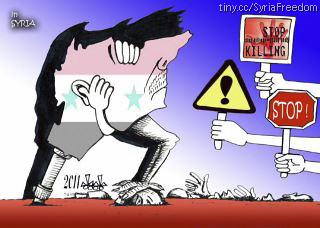
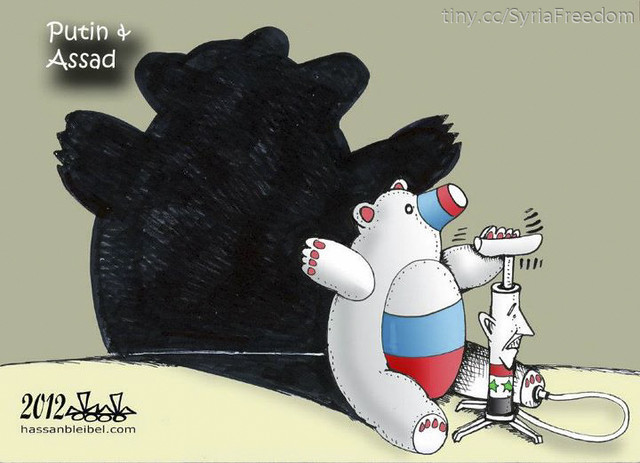
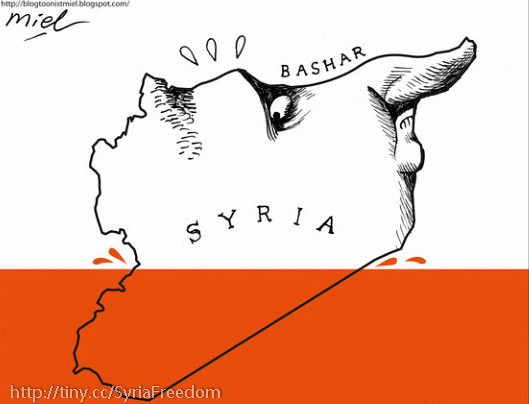
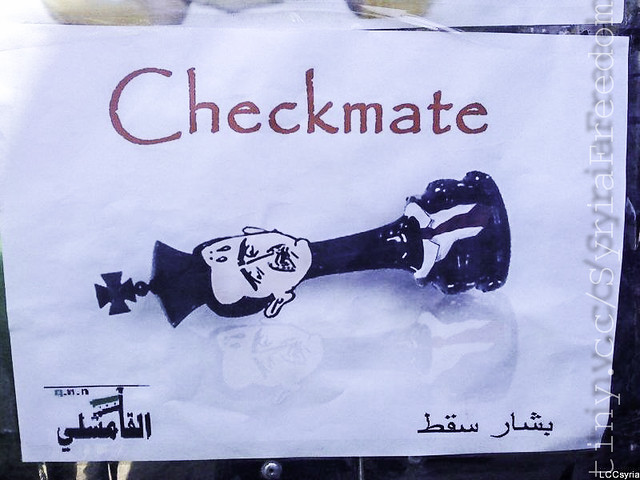

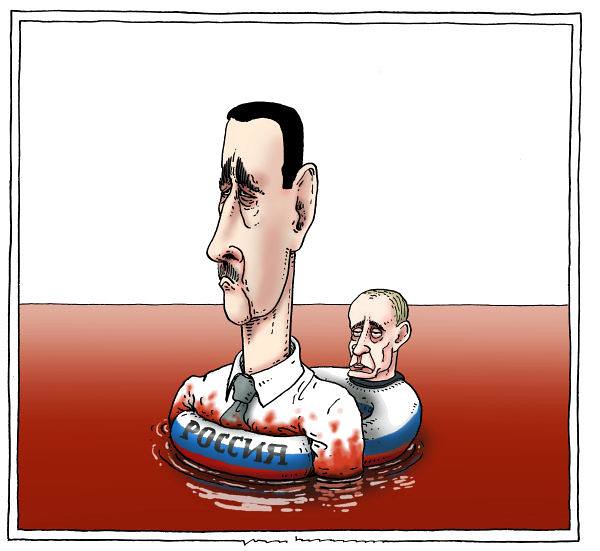
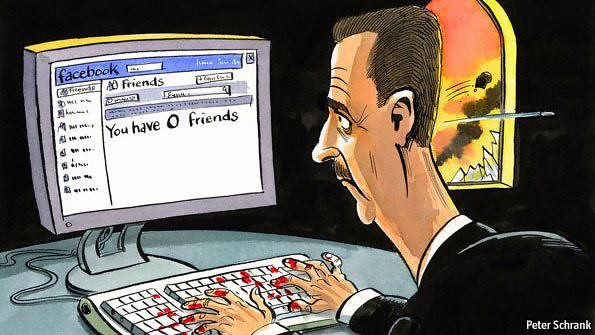
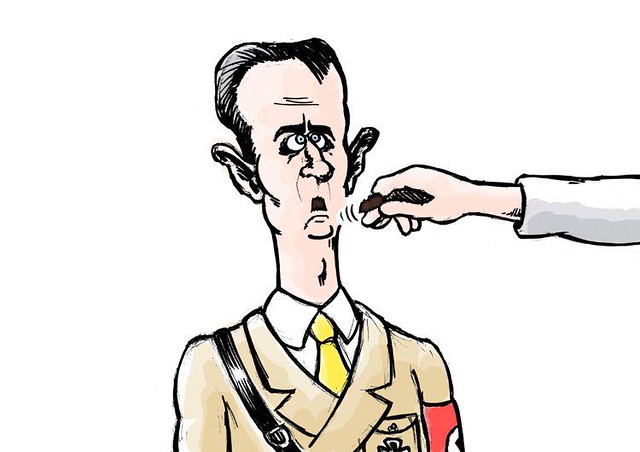

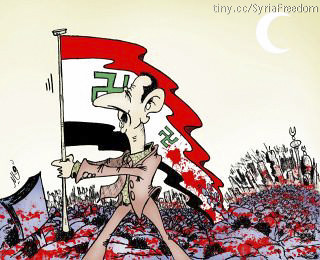
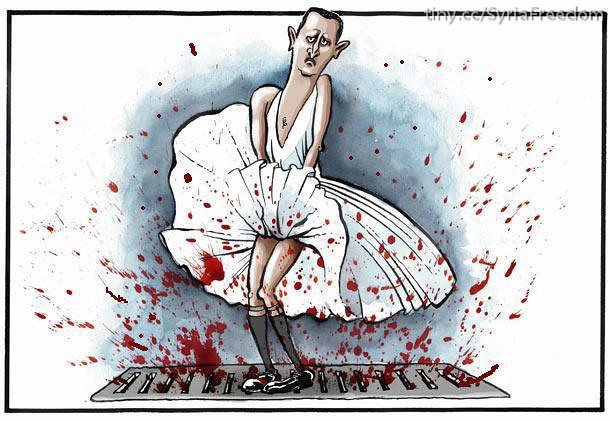
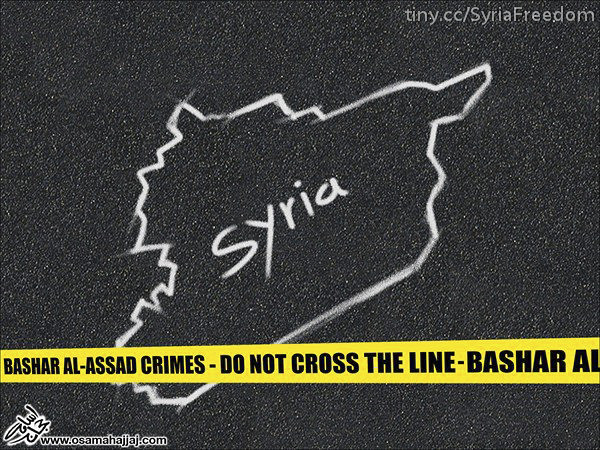

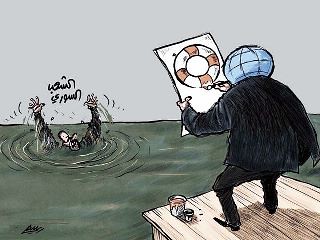
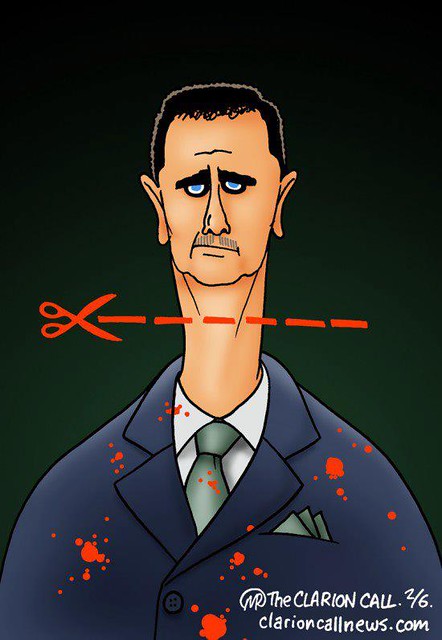
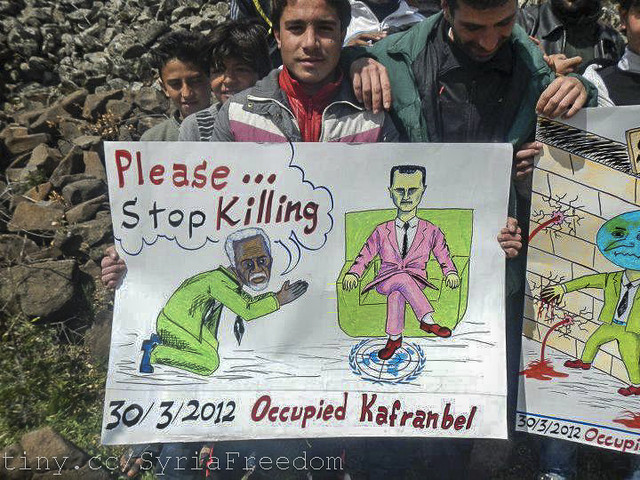
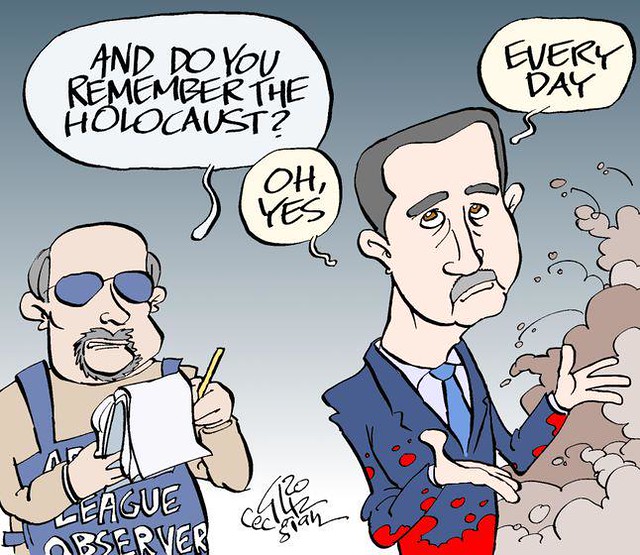
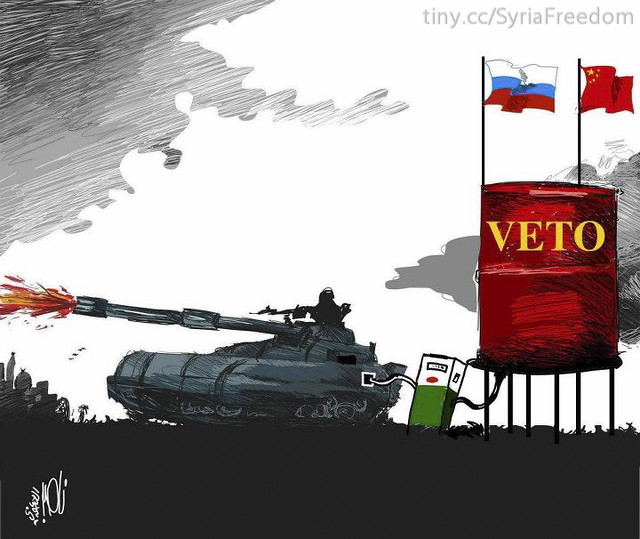
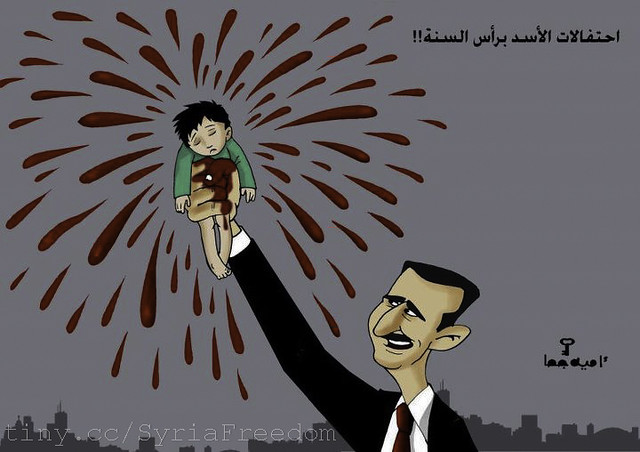
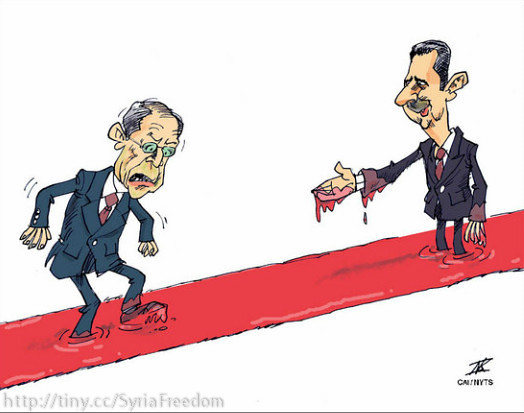
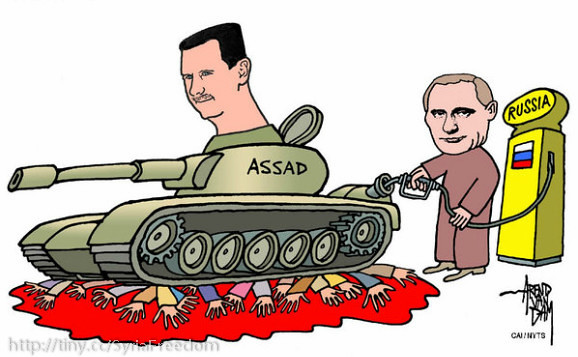

Also, see this article on Syrian artists including children:
Columbia University’s Knox Hall is quiet. Breaking the Fear Barrier!, an art exhibit of political cartoons, news photos, documentary footage and children’s drawings to raise awareness about the revolts in Syria, opened its doors two hours ago and scarcely anyone has shown up. The eerie stillness is a harsh reminder of the world’s approach to the situation in Syria: silence and inaction.
Syria, a country with a population of 20 million people, has been in the midst of revolutionary turmoil for more than eight months. Without any oil to speak of or other strategic importance to the West, interest for the most bloody revolt in the Arab Spring has been virtually nonexistent. Nadine Moubayed, a 30-year-old graduate student of architecture at CUNY, organized the event. Born in Aleppo, Nadine moved to the United States when she was 6 years old. Watching the people in her home country rise up against their oppressors has made her determined to get the word out on Syria’s predicament.
Artwork from that article:
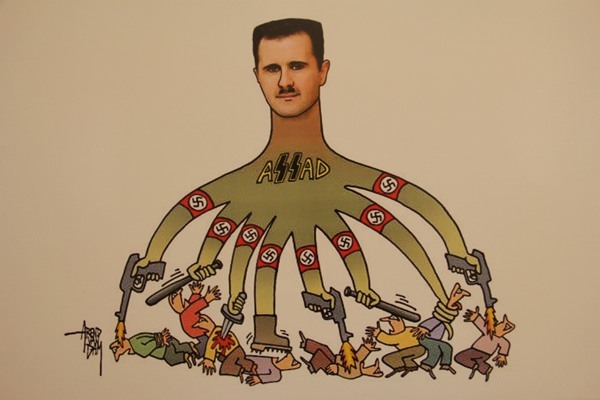
A great place for more political artwork beyond our website is the “Center for the Study of Political Graphics,” a group that has been working in the field for decades. The Center, “collects, preserves, and exhibits posters relating to historical and contemporary movements for social change. Through its varied programs, CSPG is reclaiming the power of art to educate and inspire people to action.”
Take a look at this excerpt from their about page:
There has never been a movement for social change without the arts—music, poetry, theater, posters–being central to that movement. Political posters in particular are powerful living reminders of struggles worldwide for peace and justice. Communication, exhortation, persuasion, instruction, celebration, warning: graphic art broadcasts its messages through bold images and striking designs. The archive contains more than 80,000 posters produced in a staggering array of visual styles and printing media, dating from the Russian Revolution to the present. University, museum, and public collections of this material are rare, and are seldom accessible to the public. CSPG is uniquely committed to widely exhibiting this rich visual record of social movements.
All art is political, but not all art is overtly political. Protest posters flaunt their politics to generate controversy. Raw and aggressive or polished and sophisticated, political posters are the graphics of dissent from existing injustices. Produced in multiples, often with urgency and any means available—offset, lithograph, silkscreen, linocut, stencil, woodcut, photocopy, or laser—few copies survive. Slapped on walls surreptitiously, often at great risk, by collectives and anonymous individuals or carefully fashioned by recognized artists in well-equipped studios, protest posters communicate instantly and directly to both literate and non-literate viewers. Like all art, political posters stir emotions and reflection. They can deepen compassion and commitment, ignite outrage, elicit laughter, and provoke action. Transmitting and promoting the ideals, hopes, and dreams of millions who have dared to raise their voices in protest, political posters empower and propel diverse movements for social change.
With more than 80,000 posters, CSPG’s growing collection represents one of the most diverse and important visual resources in the nation, and is frequently used by artists, activists, scholars, students, filmmakers, and playwrights. The collection includes posters from over 100 countries. The posters are physically vulnerable markers of historical frontiers, international relations, and popular sentiment. The historical sweep of the collection makes conservation of these fragile graphic records of the utmost importance, and CSPG is committed to preserving the archive for future generations.In addition to posters donated by over 1000 individuals and organizations, CSPG’s collection includes the La Peña poster archive, the Fireworks Graphics poster archive, the Bob Fitch poster archive, the David Kunzle poster collection, and the Jill and Michael McCain Collection. The archive also collects buttons and bumperstickers. CSPG is a non-profit, tax-exempt educational archive. All donations are tax-deductible.
Leave a Reply